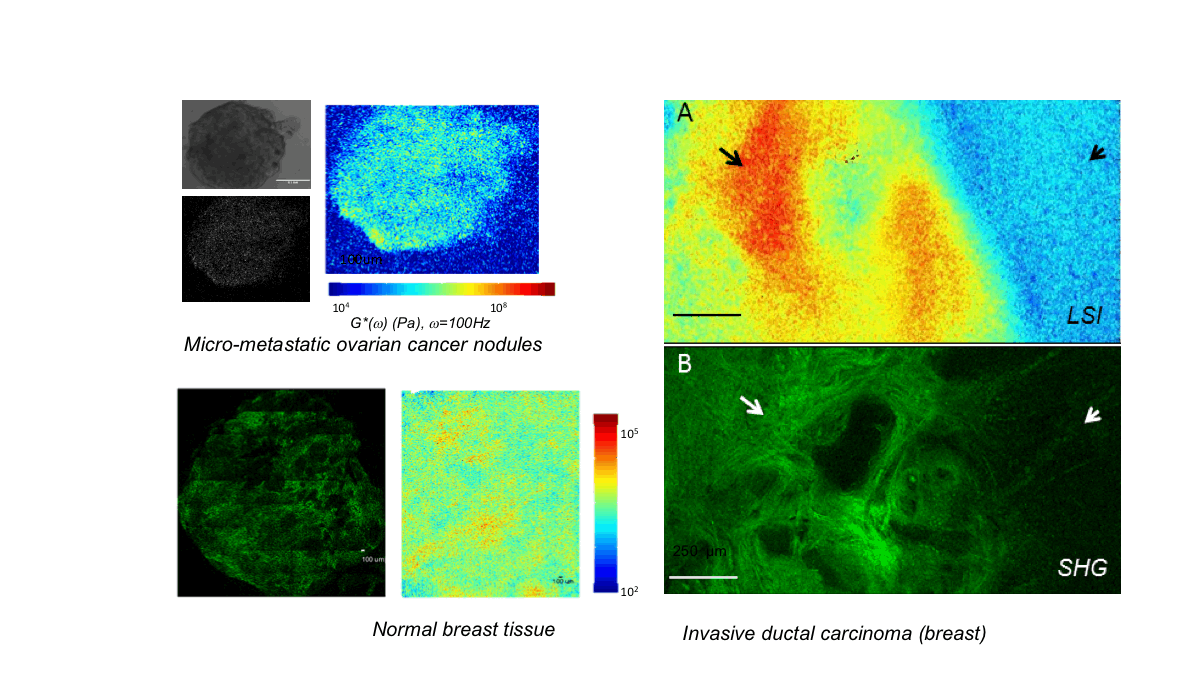Tumors are often detected by palpation of a rigid mass within a compliant tissue. Studies indicate this increased stiffness is not only the consequence, but also the direct active cause of tumor progression, malignancy and drug resistance. There is growing recognition that the stiffness of the extracellular matrix (ECM) is a powerful regulator of cell response, and that the proliferation, malignant transformation and chemo-resistance of tumor cells can be modulated by tuning ECM mechanical properties. These insights indicate that cancer is likely mediated by a synergistic dialogue between ECM mechanical cues and oncogenic signaling, and therefore knowledge of ECM mechanics is equally important for advancing current understanding of tumorigenesis and for developing new therapeutic paradigms to counter drug resistance in cancer. Current understanding of the cell-ECM mechanobiologic dialogue is incomplete because we have no means for measuring the mechanical properties of the microenvironment perceived by cells. Ou group is developing a laser speckle rheology (LSR) microscope that likely will play an important role addressing this key challenge. The LSR microscope is poised to provide the unique capability to provide micro-mechanical maps of the heterogeneous tumor ECM relevant to the microenvironment of a single cell. We envision these insights will open new paradigms for rheology-informed cancer diagnosis and drug development for improved therapeutic efficacy in the future.

LSM evaluation of ovarian cancer nodules shows stiffness changes can be measured at minute cell scales on the order of a few cell clusters. (OVCAR 5 cell lines were used, in vitro OvCa nodules were obtained from the Hasan lab at the Wellman Center) Scale bars: 100 µm. Even at the cellular levels, a mechanical transformation from surrounding matrix is apparent.
LSM maps of viscoelastic modulus, G, in normal breast tissue and invasive ductal carcinoma (IDC) excised from patients. The IDC sample shows significant heterogeneous fibrotic stiffening (orange-red) of the ECM vs the normal tissue. Correlative second harmonic imaging corresponding to collagen is observed in the same locations. Scale bar: 100um
